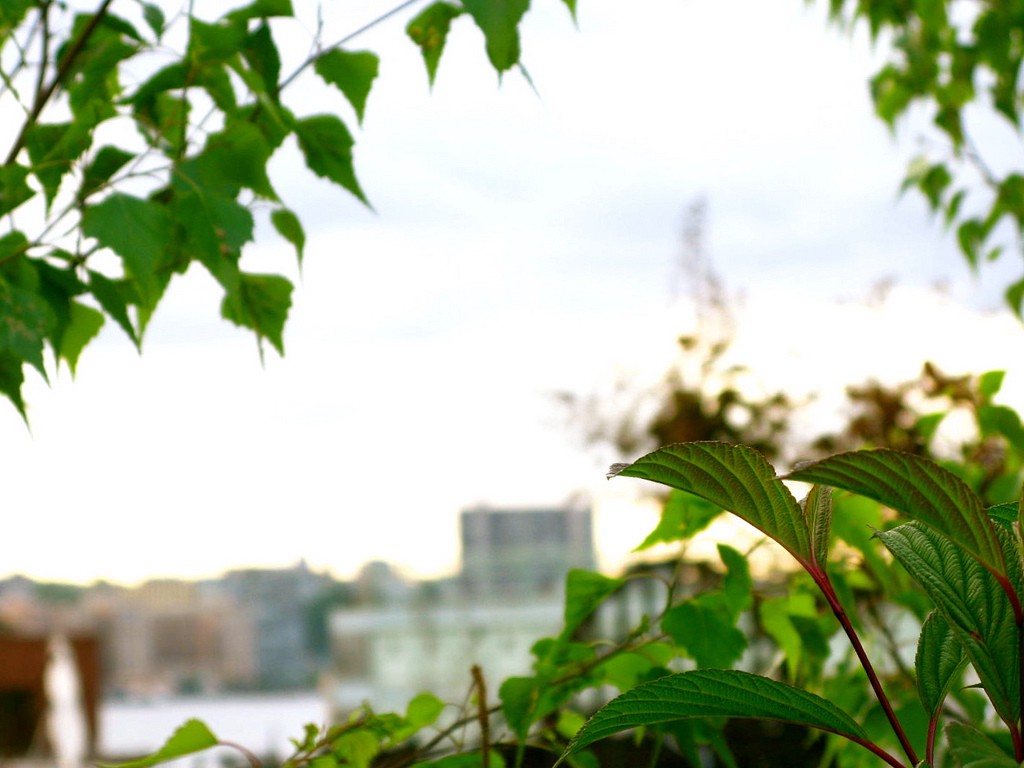

Last week, the French government passed legislation mandating that the roofs of all new commercial buildings be partially covered by solar panels or rooftop gardens. The legislation was scaled back from its original vision but has still been dubbed a trailblazing approach to urban sustainability.
The roofs of our buildings provide a potentially surprising option for building more environmentally friendly cities. Solar panels have obvious benefits; they offer a way to use the top of a building to generate renewable energy. Beyond solar, in New York the White Roof Project is drawing on the millennia-old Mediterranean and Middle Eastern concept of painting roofs white to keep buildings cool. London buses apply a similar idea.
Rooftop gardening can provide a host of benefits, as well. Gardens insulate buildings, reducing noise levels, retaining storm water (therefore reducing local flooding), and helping to lower levels of dust and smog. More important than that, rooftop gardens are a space for people to enjoy, offering a connection to nature fast disappearing. Gardens not only provide breeding grounds, homes, and transport routes for local flora and fauna, they bring those spaces closer to city folk who are unlikely to experience them on a day-to-day basis.
Around the world cities are embracing green initiatives with open arms. Globally, we are seeing an increased interest in rooftop solar installations, with differing legislation leading to success in countries as far apart as Germany and Australia. Such programs have included tax incentives, rebates, and feed in tariffs, all designed to encourage consumers to take up this new energy source. Grassroots crowdfunded projects have also helped build momentum.
Roof and urban gardens are seeing a similar push. After the success of New York’s Highline, which turned an unused train line into a new public park, London ran its own competition to do something similar. The prize was awarded to an unlikely project–the development of a garden in an unused tunnel–but the shortlist included several roof-based ideas, too. These ideas have even spread locally. The Urban Wild Project, for example, is building a series of interlinked gardens on the rooftops of a shopping strip in South London.
There is equal enthusiasm for similar initiatives in Japan. In a country short on space, the East Japan Railway Company recently began building community gardens on top of all of its railways stations. The gardens offer a piece of nature within Japan’s huge cities, yielding residents the opportunity to grow their own food and providing them a place to come and relax or picnic.
Sydney’s Central Park development provides a combination of the two. Its new skyscraper is the epitome of sustainable design, featuring hanging gardens, a tri-generation power plant, and a water recycling system–hence the reason the building was named the best tall building in the world.
Yet despite progress, models like this are still unfortunately few and far between, which is why the French legislation is so important. While it won’t necessarily lead to buildings as impressive as these projects, the law will make sustainable urban design a concern for all new developments–whether developers like it or not. This is no longer about incentives or voluntary programs. It is about making sustainability core to the understanding of how we build and design cities.
In an increasingly urbanized world, and one facing significant environmental issues, this is becoming more crucial than ever. Let’s hope more countries take France’s lead.


How We Get To Next was a magazine that explored the future of science, technology, and culture from 2014 to 2019. This article is part of our Power Up section, which looks at the future of electricity and energy. Click the logo to read more.
